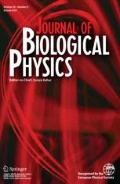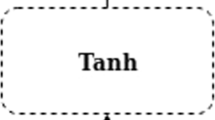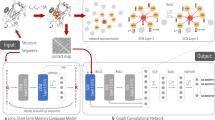Abstract
One fundamental problem of protein biochemistry is to predict protein structure from amino acid sequence. The inverse problem, predicting either entire sequences or individual mutations that are consistent with a given protein structure, has received much less attention even though it has important applications in both protein engineering and evolutionary biology. Here, we ask whether 3D convolutional neural networks (3D CNNs) can learn the local fitness landscape of protein structure to reliably predict either the wild-type amino acid or the consensus in a multiple sequence alignment from the local structural context surrounding site of interest. We find that the network can predict wild type with good accuracy, and that network confidence is a reliable measure of whether a given prediction is likely going to be correct or not. Predictions of consensus are less accurate and are primarily driven by whether or not the consensus matches the wild type. Our work suggests that high-confidence mis-predictions of the wild type may identify sites that are primed for mutation and likely targets for protein engineering.








Similar content being viewed by others
Data availability
Analysis scripts and processed data are available on GitHub: https://github.com/akulikova64/CNN_protein_landscape. Trained neural networks and the training set protein chains and microenvironments have been deposited at the Texas Data Repository and are available at: https://doi.org/10.18738/T8/8HJEF9.
References
Abadi, M., Agarwal, A., Barham, P., Chen, Z., Citro, C., Corrado, G.S., Davis, A., Dean, J., Devin, M., Ghemawat, S., Goodfellow, I., Harp, A., Irving, G., Isard, M., Jozefowicz, R., Jia, Y., Kaiser, L., Kudlur, M., Levenberg, J., Mané, D., Schuster, M., Monga, R., Moore, S., Murray, D., Olah, C., Shlens, J., Steiner, B., Sutskever, I., Talwar, K., Tucker, P., Vanhoucke, V., Vasudevan, V., Viégas, F., Vinyals, O., Warden, P., Wattenberg, M., Wicke, M., Yu, Y., Zheng, X.: Tensorflow: Large-scale machine learning on heterogeneous systems (2015). Software available from: https://www.tensorflow.org/
Abriata, L.A., Bovigny, C., Dal Peraro, M.: Detection and sequence/structure mapping of biophysical constraints to protein variation in saturated mutational libraries and protein sequence alignments with a dedicated server. BMC Bioinf. 17, 242 (2016)
Benjamini, Y., Hochberg, Y.: Controlling the false discovery rate: A practical and powerful approach to multiple testing. J R Stat Soc Series B Stat Methodol J R STAT SOC B. 57, 289–300 (1995)
Bisardi, M., Rodriguez-Rivas, J., Zamponi, F., Weigt, M.: Modeling sequence-space exploration and emergence of epistatic signals in protein evolution. https://arxiv.org/abs/2106.02441 (2021)
Dolinsky, T.J., Czodrowski, P., Li, H., Nielsen, J.E., Jensen, J.H., Klebe, G., Baker, N.A.: PDB2PQR: expanding and upgrading automated preparation of biomolecular structures for molecular simulations. Nucleic Acids Research 35, W522–W525 (2007)
Dyson, H.J., Wright, P.E., Scheraga, H.A.: The role of hydrophobic interactions in initiation and propagation of protein folding. Proc. Natl. Acad. Sci. U.S.A. 103(35), 13057–13061 (2006)
Echave, J., Spielman, S.J., Wilke, C.O.: Causes of evolutionary rate variation among protein sites. Nature Rev. Genet. 17, 109–121 (2016)
Echave, J., Wilke, C.O.: Biophysical models of protein evolution: understanding the patterns of evolutionary sequence divergence. Annu. Rev. Biophys. 46, 85–103 (2017)
Elnaggar, A., Heinzinger, M., Dallago, C., Rehawi, G., Yu, W., Jones, L., Gibbs, T., Feher, T., Angerer, C., Steinegger, M., Bhowmik, D., Rost, B.: ProtTrans: Towards cracking the language of life’s code through self-supervised deep learning and high performance computing. IEEE Transactions on Pattern Analysis & Machine Intelligence (2021). https://doi.org/10.1109/TPAMI.2021.3095381
Frauenfelder, H., Sligar, S.G., Wolynes, P.G.: The energy landscapes and motions of proteins. Science 254, 1598–1603 (1991)
Goldstein, R.A., Pollock, D.D.: The tangled bank of amino acids. Protein Sci. 25, 1354–1362 (2016)
Goldstein, R.A., Pollock, D.D.: Sequence entropy of folding and the absolute rate of amino acid substitutions. Nature Ecol. Evol. 1, 1923–1930 (2017)
Hartman, E.C., Tullman-Ercek, D.: Learning from protein fitness landscapes: a review of mutability, epistasis, and evolution. Curr. Opin. Syst. Biol. 14, 25–31 (2019)
Henikoff, S., Henikoff, J.G.: Amino acid substitution matrices from protein blocks. Proc. Natl. Acad. Sci. U.S.A. 89, 10915–10919 (1992)
Huang, T.T., del Valle Marcos, M.L., Hwang, J.K., Echave, J.: A mechanistic stress model of protein evolution accounts for site-specific evolutionary rates and their relationship with packing density and flexibility. BMC Evol. Biol. 14, 78 (2014)
Jack, B.R., Meyer, A.G., Echave, J., Wilke, C.O.: Functional sites induce long-range evolutionary constraints in enzymes. PLOS Biol. 14, 1–23 (2016)
Jiang, Q., Teufel, A.I., Jackson, E.L., Wilke C.O.: Beyond thermodynamic constraints: Evolutionary sampling generates realistic protein sequence variation. Genetics 208, 1387–1395 (2018)
Johnson, M.M., Wilke, C.O.: Site-specific amino acid distributions follow a universal shape. J. Mol. Evol. 88, 731–741 (2020)
Jones, D.T., Buchan, D.W.A., Cozzetto, D., Pontil, M.: PSICOV: precise structural contact prediction using sparse inverse covariance estimation on large multiple sequence alignments. Bioinformatics 28, 184–190 (2011)
Jumper, J., Evans, R., Pritzel, A., Green, T., Figurnov, M., Ronneberger, O., Tunyasuvunakool, K., Bates, R., Žídek, A., Potapenko, A., Bridgland, A., Meyer, C., Kohl, S.A.A., Ballard, A.J., Cowie, A., Romera-Paredes, B., Nikolov, S., Jain, R., Adler, J., Back, T., Petersen, S., Reiman, D., Clancy, E., Zielinski, M., Steinegger, M., Pacholska, M., Berghammer, T., Bodenstein, S., Silver, D., Vinyals, O., Senior, A.W., Kavukcuoglu, K., Kohli, P., Hassabis, D.: Highly accurate protein structure prediction with AlphaFold. Nature 596, 583–589 (2021). https://doi.org/10.1038/s41586-021-03819-2
Kachroo, A.H., Laurent, J.M., Yellman, C.M., Meyer, A.G., Wilke, C.O., Marcotte, E.M.: Systematic humanization of yeast genes reveals conserved functions and genetic modularity. Science 348, 921–925 (2015)
Le, S.Q., Gascuel, O.: An improved general amino acid replacement matrix. Mol. Biol. Evol. 25, 1307–1320 (2008)
Leaver-Fay, A., M.Tyka, Lewis, S.M., Lange, O.F., Thompson, J., Jacak, R., Kaufman, K.W., Douglas Renfrew, P., Smith, C.A., Sheffler, W., Davis, I.W., Cooper, S., Treuille, A., Mandell, D.J., Richter, F., Andrew Ban, Y.E., Fleishman, S.J., Corn, J.E., Kim, D.E., Lyskov, S., Berrondo, M., Mentzer, S., Popovic, Z., Havranek, J.J., Karanicolas, J., Das, R., Meiler, J., Kortemme, T., Gray, J.J., Kuhlman, B., Baker, D., Bradley, P.: Rosetta3: An object-oriented software suite for the simulation and design of macromolecules. Meth. Enzymol. 487, 545–574 (2011)
Marcos, M.L., Echave, J.: Too packed to change: side-chain packing and site-specific substitution rates in protein evolution. PeerJ 3, e911 (2015)
Mirny, L.A., Shakhnovich, E.I.: Universally conserved positions in protein folds: reading evolutionary signals about stability, folding kinetics and function. J. Mol. Biol. 291, 177–196 (1999)
Mitternacht, S.: FreeSASA: an open source C library for solvent accessible surface area calculations [version 1; peer review: 2 approved]. F1000 Research 5, 189 (2016)
Nelson, E.D., Grishin, N.V.: Long-range epistasis mediated by structural change in a model of ligand binding proteins. PLoS ONE 11, e0166739 (2016)
Parra, R.G., Schafer, N.P., Radusky, L.G., Tsai, M.Y., Guzovsky, A.B., Wolynes, P.G., Ferreiro, D.U.: Protein Frustratometer 2: a tool to localize energetic frustration in protein molecules, now with electrostatics. Nucleic Acids Res. 44, W356–W360 (2016)
Pokusaeva, V.O., Usmanova, D.R., Putintseva, E.V., Espinar, L., Sarkisyan, K.S., Mishin, A.S., Bogatyreva, N.S., Ivankov, D.N., Akopyan, A.V., Avvakumov, S.Y., Povolotskaya, I.S., Filion, G.J., Carey, L.B., Kondrashov, F.A.: An experimental assay of the interactions of amino acids from orthologous sequences shaping a complex fitness landscape. PLOS Genet. 15, 1–30 (2019)
Pollock, D.D., Thiltgen, G., Goldstein, R.A.: Amino acid coevolution induces an evolutionary Stokes shift. Proc. Natl. Acad. Sci. U.S.A. 109, E1352–E1359 (2012)
R Core Team: R: a language and environment for statistical computing. R Foundation for Statistical Computing, Vienna, Austria (2019)
Repecka, D., Jauniskis, V., Karpus, L., Rembeza, E., Rokaitis, I., Zrimec, J., Poviloniene, S., Laurynenas, A., Viknander, S., Abuajwa, W., Savolainen, O., Meskys, R., Engqvist, M.K.M., Zelezniak, A.: Expanding functional protein sequence spaces using generative adversarial networks. Nat. Mach. Intell. 3, 324–333 (2021)
Rives, A., Meier, J., Sercu, T., Goyal, S., Lin, Z., Liu, J., Guo, D., Ott, M., Zitnick, C.L., Ma, J., Fergus, R.: Biological structure and function emerge from scaling unsupervised learning to 250 million protein sequences. Proc. Natl. Acad. Sci. U.S.A. 118(15) (2021)
Schymkowitz, J., Borg, J., Stricher, F., Nys, R., Rousseau, F., Serrano, L.: The FoldX web server: an online force field. Nucleic Acids Res. 33, W382–W388 (2005)
Shah, P., McCandlish, D.M., Plotkin, J.B.: Contingency and entrenchment in protein evolution under purifying selection. Proc. Natl. Acad. Sci. U.S.A. 112, E3226–E3235 (2015)
Sharir-Ivry, A., Xia, Y.: Nature of long-range evolutionary constraint in enzymes: insights from comparison to pseudoenzymes with similar structures. Mol. Biol. Evol. 35, 2597–2606 (2018)
Shroff, R., Cole, A.W., Diaz, D.J., Morrow, B.R., Donnell, I., Gollihar, J., Ellington, A.D., Thyer, R.: Discovery of novel gain-of-function mutations guided by structure-based deep learning. ACS Synth. Biol. 9, 2927–2935 (2020)
Sitkoff, D., Sharp, K.A., Honig, B.: Accurate calculation of hydration free energies using macroscopic solvent models. J. Phys. Chem. 98, 1978–1988 (1994)
Teufel, A.I., Johnson, M.M., Laurent, J.M., Kachroo, A.H., Marcotte, E.M., Wilke, C.O.: The many nuanced evolutionary consequences of duplicated genes. Mol. Biol. Evol. 36, 304–314 (2019)
Torng, W., Altman, R.B.: 3D deep convolutional neural networks for amino acid environment similarity analysis. BMC Bioinf. 18, 302 (2017)
Whelan, S., Goldman, N.: A general empirical model of protein evolution derived from multiple protein families using a maximum-likelihood approach. Mol. Biol. Evol. 18, 691–699 (2001)
Wickham, H., Averick, M., Bryan, J., Chang, W., D’Agostino McGowan, L., François, R., Grolemund, G., Hayes, A., Henry, L., Hester, J., Kuhn, M., Lin Pedersen, T., Miller, E., Milton Bache, S., Müller, K., Ooms, J., Robinson, D., Paige Seidel, D., Spinu, V., Takahashi, K., Vaughan, D., Wilke, C., Woo, K., Yutani, H.: Welcome to the tidyverse. J. Open Source Softw. 4, 1686 (2019)
Xu, Y., Verma, D., Sheridan, R.P., Liaw, A., Ma, J., Marshall, N.M., McIntosh, J., Sherer, E.C., Svetnik, V., Johnston, J.M.: Deep dive into machine learning models for protein engineering. J. Chem. Inf. Model. 60, 2773–2790 (2020)
Acknowledgements
We thank Raghav Shroff for writing our initial PDB to CIF converter.
Funding
This work was supported by grants from the Welch Foundation (F-1654), the Department of Defense – Defense Threat Reduction Agency (HDTRA12010011), and the National Institutes of Health (R01 AI148419). We would like to thank AMD for the donation of critical hardware and support resources from its HPC Fund that made this work possible. C.O.W. also acknowledges funding from the Jane and Roland Blumberg Centennial Professorship in Molecular Evolution and the Dwight W. and Blanche Faye Reeder Centennial Fellowship in Systematic and Evolutionary Biology at UT Austin.
Author information
Authors and Affiliations
Contributions
All authors contributed to the study conception and design. Material preparation, data collection and analysis were performed by A. V. Kulikova, D. J. Diaz, and J. M. Loy. The first draft of the manuscript was written by A. V. Kulikova and all authors commented on previous versions of the manuscript. All authors read and approved the final manuscript.
Corresponding author
Ethics declarations
Conflicts of interest/Competing interests
The authors declare that they have no conflict of interest.
Additional information
Publisher’s Note
Springer Nature remains neutral with regard to jurisdictional claims in published maps and institutional affiliations.
This article belongs to the Topical Collection: The Revolutionary Impact of Landscapes in Biology
Guest Editors: Robert Austin, Shyamsunder Erramilli, Sonya Bahar.
Supplementary information
Below is the link to the electronic supplementary material.
Rights and permissions
About this article
Cite this article
Kulikova, A.V., Diaz, D.J., Loy, J.M. et al. Learning the local landscape of protein structures with convolutional neural networks. J Biol Phys 47, 435–454 (2021). https://doi.org/10.1007/s10867-021-09593-6
Received:
Accepted:
Published:
Issue Date:
DOI: https://doi.org/10.1007/s10867-021-09593-6




